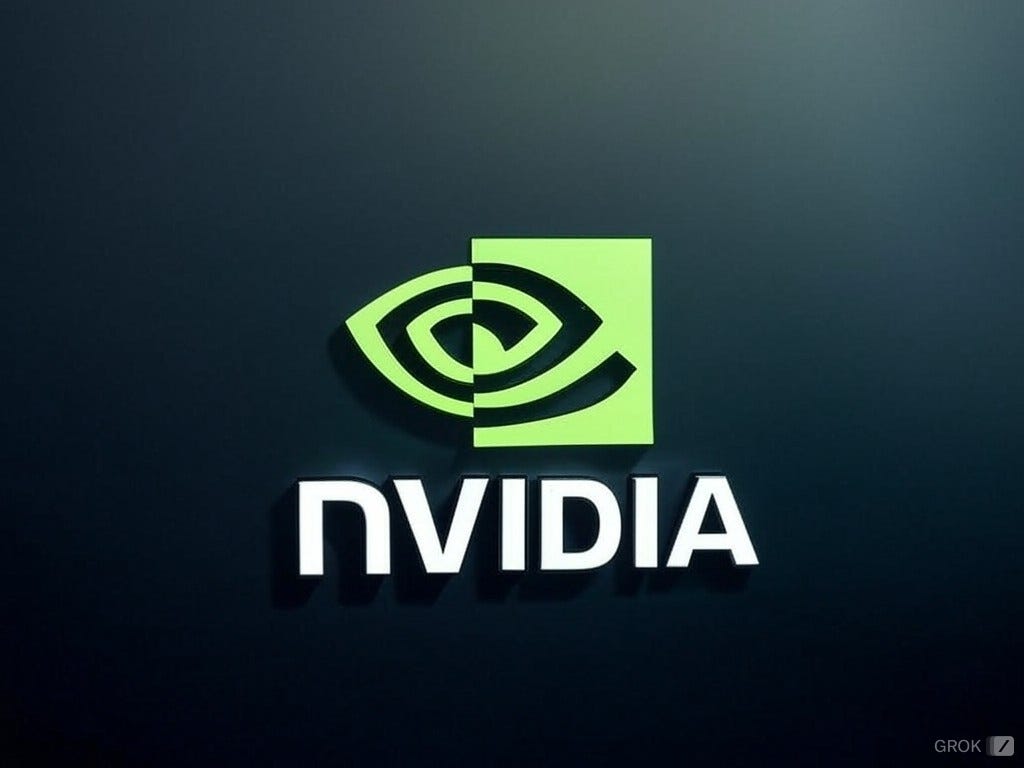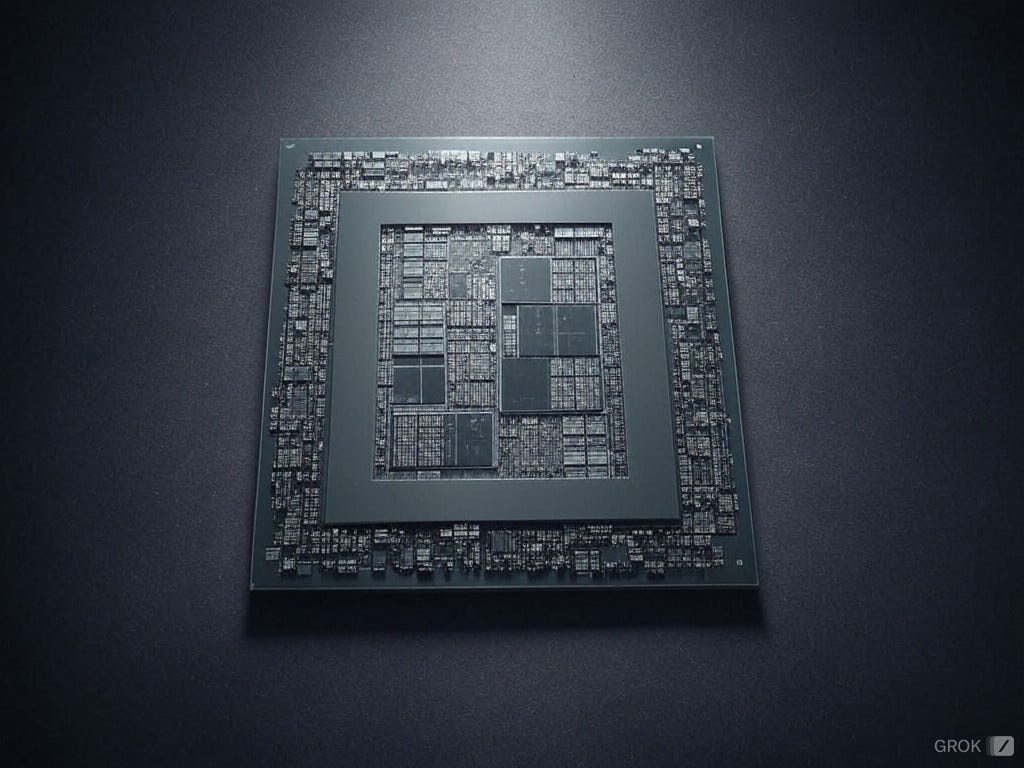NVIDIA's Top 3 Acquisition Targets (2025): Realistic & Competitive Edge
Who are the most realistic acquisition targets for NVIDIA to keep them ahead?
There are several companies NVIDIA should strongly consider acquiring in 2025 to enhance their competitive edge (strengthen moat).
Previously I wrote about potential NVIDIA acquisition targets under Trump and rank-ordered them by odds, feasibility, etc.
NVIDIA’s most recent acquisitions included: Deci AI (~$300M) & Run:AI (~$700M) in April 2024 for AI optimization and workload orchestration.
Obviously they’d love to acquire Intel, ARM, and Databricks… but Intel & Arm would likely be Dikembe Mutombo blocked (no no no, not today) by regulators and Databricks may not sell.
For this specific piece I focused on: (1) realistic targets (e.g. no antitrust scrutiny, regulatory BS) and (2) competitive edge (who actually helps NVIDIA significantly).
These are companies that NVIDIA should attempt to purchase going forward that would likely enhance their competitive edge and MOAT to a greater extent.
Key Themes:
CPU IP & Architectural Flexibility: Secure control over CPU architectures to complement GPUs and DPUs, reducing dependence on third-party IP.
Next-Gen Compute Paradigms (Photonics & Optical I/O): Leapfrog current electronic limitations by integrating photonic computing and optical interconnects.
Integrated Cloud Infrastructure: Offer NVIDIA’s cutting-edge technologies as-a-service, accelerating adoption and making it harder for hyperscalers to lure customers away.
NVIDIA’s Realistic Acquisition Targets for a Competitive Edge (2025)
Each recommended target is selected based on strategic fit, feasibility, and potential to integrate seamlessly into NVIDIA’s ecosystem.
Included are rough cost estimates, strategic value, and integration considerations.
Disclaimer: Nothing here is investment advice. This is merely brainstorming some of the best acquisition targets for NVIDIA in coming years. Nothing is static and companies that look appealing today may not 1 year from now.
1. SiFive (RISC-V CPU IP)
RISC-V is gaining momentum as a flexible, open CPU architecture that can be tailored to specific workloads.
By acquiring SiFive, NVIDIA secures direct control over CPU IP and can design heterogeneous systems (CPU-GPU-DPU) optimized for AI and HPC.
Given the rise of custom ASICs at hyperscalers, this CPU independence ensures NVIDIA can evolve its architectures without relying on Arm’s licensing or risking future conflicts if Arm’s neutrality is compromised.
Synergy:
Integrate RISC-V cores into NVIDIA’s Grace CPU roadmap and data center products.
Deliver CPU designs finely tuned for large-scale AI training, inference, and data analytics workloads.
Estimated Cost (2025): ~$5-7 billion. SiFive’s size and maturity make this price more achievable than a mega-deal like Arm.
Competitive Edge: Architectural independence allows rapid innovation in CPU designs, making it harder for hyperscalers to gain a long-term CPU edge. NVIDIA can swiftly adapt to changing workloads and maintain performance parity—or leadership—against custom chip deployments.
2. Lightmatter (Photonic AI Computing)
As models balloon in size, conventional silicon hits limits in power, heat, and bandwidth.
Photonic computing can fundamentally alter performance-per-watt and throughput.
Acquiring Lightmatter jumpstarts NVIDIA’s move into this next-generation domain, giving it a strategic lead before hyperscalers perfect their own photonic or optical solutions.
Synergy:
Integrate photonic accelerators alongside GPUs and DPUs, creating hybrid systems with unprecedented efficiency.
Offer data centers dramatically lower power costs and reduced latency, differentiating NVIDIA’s solutions from electronic-only ASICs.
Estimated Cost (2025): ~$8-10 billion. Lightmatter’s valuation may climb as its tech matures, but it should remain within reach.
Competitive Edge: Delivers a multi-year advantage in performance-per-watt. Hyperscalers face long R&D timelines to develop comparable photonic tech, while NVIDIA sets the industry standard early.
3. CoreWeave (GPU-Optimized Cloud)
Hyperscalers integrate custom chips into their massive cloud platforms, pushing their own silicon into enterprises effortlessly.
NVIDIA needs a similar direct-to-customer channel to showcase and rapidly deploy its newest innovations.
Owning CoreWeave, focused on GPU infrastructure, ensures instant market access for NVIDIA’s latest CPU and photonic breakthroughs.
Synergy:
Launch RISC-V-based, photonic-enabled systems directly in CoreWeave’s cloud.
Provide enterprises a plug-and-play environment to leverage NVIDIA’s leading-edge hardware without complexity, reducing the appeal of hyperscaler clouds built around custom chips.
Estimated Cost (2025): ~$35-40 billion. GPU cloud services are booming, but CoreWeave should still be significantly cheaper than a large established cloud provider.
Competitive Edge: Controlling the cloud delivery layer shortens time-to-adoption for new architectures. Enterprises can immediately benefit from each new generation of NVIDIA hardware, leaving hyperscalers scrambling to match these offerings.
Optional Strategic Target: Hugging Face (AI Model Hub & Community)
With Deci AI already in-house, adding Hugging Face would secure the AI model development and distribution pipeline.
Hugging Face is where cutting-edge models are shared.
Owning it means state-of-the-art models become NVIDIA-optimized by default, encouraging developers and enterprises to stay within NVIDIA’s ecosystem.
Synergy:
Pair Hugging Face’s model repository with NVIDIA’s integrated RISC-V CPUs, GPUs, and photonic accelerators.
Give developers a frictionless path: discover models on Hugging Face, run them optimally on NVIDIA hardware right away.
Estimated Cost (2025): ~$12-15 billion. Hugging Face’s growth and position might raise its valuation, but it’s still more feasible than an Arm-level deal.
Competitive Edge: Locks in the developer and research community. Hyperscalers can build custom chips, but if the world’s best models are naturally tuned and hosted on a NVIDIA-owned platform, migrating away is costly and less attractive.
Additional Considerations
Ayar Labs (Optical I/O): Complement Lightmatter’s photonics with ultra-high-bandwidth optical interconnects. Estimated cost: ~$3-4B. This enhances data center scaling efficiency, making NVIDIA’s platform even harder to match.
Ampere Computing (Arm-Based Server CPUs): If RISC-V adoption lags, Ampere’s proven Arm server CPUs could be a backup. Estimated cost: ~$15-18B by late 2020s—a bigger investment, but still less than acquiring Arm directly.
Semtech, Credo Technology (Connectivity & IoT): Smaller, incremental enhancements (hundreds of millions) to add future-proof connectivity and edge capabilities. Estimated costs: ~$8-10B (Semtech) & ~$20-25B (Credo).
Financial & Competitive Reality Check
Affordability & Less Scrutiny: Each target (SiFive, Lightmatter, CoreWeave) falls into the manageable billion-dollar range or lower, except Hugging Face. These deals should attract far less regulatory opposition than an Arm- or Intel-scale acquisition.
Immediate & Lasting Impact:
Short-Term: CoreWeave would be a quick win—immediate optimization gains and distribution channels.
Mid-Term: SiFive and Lightmatter deliver architectural and performance leaps that come to fruition in 2–3 years, aligning with the next waves of AI model growth.
Long-Term: Hugging Face or Ayar Labs strengthen NVIDIA’s moat for the next decade by controlling the community platform and future I/O paradigms.
Maintaining the Performance Lead: By combining CPU autonomy (SiFive), cutting-edge hardware innovation (Lightmatter, Ayar Labs), and an integrated delivery vehicle (CoreWeave), NVIDIA builds a multi-layered advantage. Hyperscalers can still invest in custom chips, but they’ll face higher costs, longer development cycles, and a constantly moving target as NVIDIA upgrades all layers of its ecosystem simultaneously.
(Related: Broadcom (AVGO) Potential Acquisition Targets 2025-2029)
Final Take: NVIDIA’s Top 3 Targets
In 2025, NVIDIA should consider executing a series of strategic, mid-sized acquisitions rather than mega-deals.
SiFive ensures CPU architectural control, Lightmatter secures a next-gen performance leap, and CoreWeave provides immediate deployment channels.
If resources allow, acquiring Hugging Face or Ayar Labs adds even deeper ecosystem lock-in and future-proofing.
Collectively, these realistic targets help NVIDIA stay ahead of hyperscalers, continuously selling out new hardware generations and maintaining a multi-year competitive lead.
What do you think? Any other ideas for NVIDIA?






